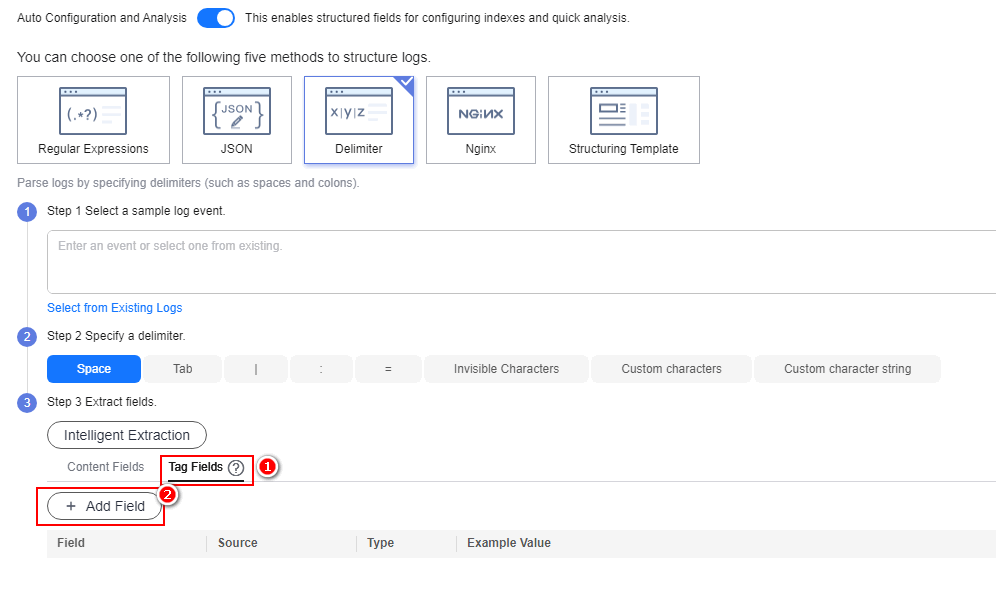Setting Structured and Tag Fields
Setting Structured Fields
You can set extracted fields after cloud structuring. For details, see Table 1.
|
Structuring Method |
Field Name |
Field Type Can Be Changed |
Field Can Be Deleted |
|---|---|---|---|
|
Regular expressions (auto generate) |
User-defined. The name must start with a letter and contain only letters and digits. |
Yes |
Yes |
|
Regular expressions (manually enter) |
|
Yes |
Yes |
|
JSON |
Names are set automatically, but you can set aliases for fields. |
Yes |
Yes |
|
Delimiter |
Default names such as field1, field2, field3 are used. You can modify these names. |
Yes |
Yes |
|
Nginx |
Names are set based on Nginx configuration, but you can set aliases for fields. |
Yes |
Yes |
|
Custom templates |
User-defined. |
Yes |
Yes |
When you use regular expressions (manually entered), JSON, delimiters, Nginx, or custom templates to structure logs, field names:
Enter 1 to 64 characters. Use only letters, digits, hyphens (-), underscores (_), and periods (.). Do not use an underscore before another underscore or a period. Do not start or end with a period.
Setting Tag Fields
When configuring log structuring, you can set the tag fields for the log information. Then, you can use these fields to run SQL queries on the Log Analysis page.
- In Step 2 Extract fields, click the Tag Fields tab and Add Field.
Figure 1 Adding a tag field

- In the Field column, enter a name for the tag field.
If you configure tag fields for a structuring rule created before the function of tag fields was brought online, no example values will be shown with the tag fields.
- To add more fields, click Add Field.
- Click Save.
Feedback
Was this page helpful?
Provide feedbackThank you very much for your feedback. We will continue working to improve the documentation.See the reply and handling status in My Cloud VOC.
For any further questions, feel free to contact us through the chatbot.
Chatbot





